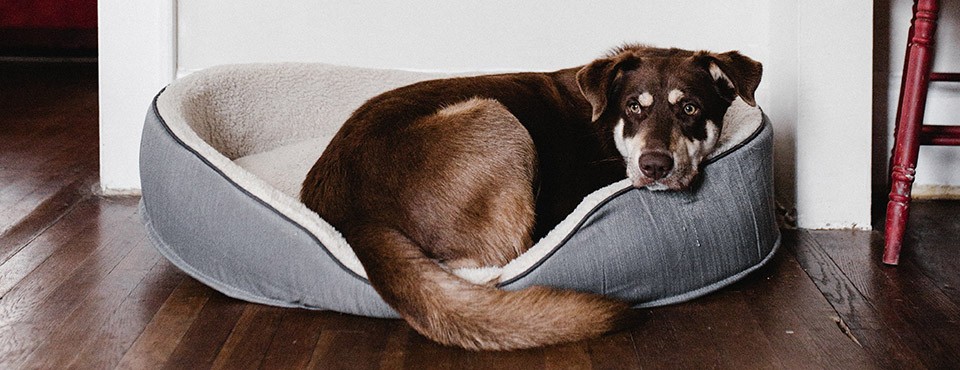It’s time to clear the air about fleas. Once they enter your home they are wired to thrive. Fleas are survivors. Technically, they are ectoparasites—organisms that live on and feed from other organisms to survive. You may be chomping at the bit to learn where fleas hide on cats and dogs, whether or not fleas hide in clothes or in the house, but you need to know exactly what you’re looking for.
When most people think and talk about fleas, they tend to be thinking and talking about adult fleas: the tiny brown jumping specks that can be as small as a pencil point.
Usually, people don’t think about the flea eggs that are laid after an adult flea consumes a meal, or the larvae that eventually hatch or the pupa that develops, but you need to look for fleas in all stages to protect your cat, dog, family, and yourself.

As soon as one flea consumes one blood meal, the foundation for an entire flea community begins. It’s as if that very first flea is the general contractor for Flea City and within 24 hours of consuming her first of many meals construction is well underway. Fleas will lay up to a maximum of 50 eggs per day from around 24 hours after feeding.
Some eggs will stay on the animal’s coat, but many will roll or fall off onto the floor, which means that within 24 hours Flea City will have many suburbs popping up everywhere throughout your home.
Adult fleas’ first meal preference is to be on your cat or dog, but they will jump on any living, breathing, moving object, so you are fair game too, they just won’t make themselves at home on your coat or skin the same way they will with your cat or dog.
Flea eggs are very hard to see. Flea eggs are small, oval white specks that resemble a grain of salt.
You’ll find flea eggs in any and all places that your cat or dog frequents—beds, bedding, crates, couches, chairs, carpeting, floor cracks or crevices, and corners.
Flea eggs can survive for approximately 10 days before hatching. Flea eggs cannot survive extreme heat, so washing your cat’s or dog’s bedding and toys, along with vacuuming and scrubbing your furniture and floors helps to remove them. It’s best to clean frequently to get rid of flea eggs.
Flea larvae are also hard to find. These are whitish-looking and maggot-like and hatch from flea eggs. They measure roughly two millimeters in length at first. Flea maggots quickly burrow themselves into the dark looking for flea dirt. As flea larvae mature, they may grow up to 4-5 millimeters in length before spinning a cocoon so they can transform into pupa.
Flea larvae spin a cocoon around themselves using their saliva along with any other dirt and debris that they can find. This cocoon is well-camouflaged within the environment. These are found in places like cracks and crevices, deep within carpets and bedding. The pupae are virtually indestructible within the armour-like cocoon. When they hatch, an adult flea emerges and quickly looks for a host to survive. The cycle continues on and on unless all adult fleas, eggs, maggots, and pupae are eliminated from the home.
If you circle back to the beginning of Flea City, you can see why one flea feeding on your cat or dog creates such an issue within your home.
Eradicating all fleas from your home can take up to three months once one flea is found. The good news is that you can plan ahead and keep your home free of fleas. Be sure to choose a treatment that’s easy to use and administer and that offers long-lasting protection. Remember that it’s essential to maintain continuous treatment year- round. Otherwise, you open the door for one flea to lay the foundation to create entire flea communities in every crack, crevice, and corner of your home. When it comes to fleas, it’s simply not worth the risk to lay out a welcome mat.
Your vet plays a big role in your pet’s health. Enter your location and get a list of vets near you.
FIND A VET















 Go To United States
Go To United States Austria
Austria Belgium
Belgium Czech Republic
Czech Republic Denmark
Denmark Europe
Europe Finland
Finland France
France Germany
Germany Greece
Greece Hungary
Hungary Ireland
Ireland Israel
Israel Italy
Italy Netherlands
Netherlands Norway
Norway Poland
Poland Portugal
Portugal Romania
Romania Slovakia
Slovakia Spain
Spain Sweden
Sweden Turkey
Turkey United Kingdom
United Kingdom